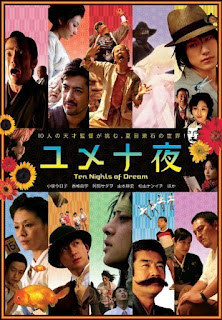
Packaged by Criterion as THE ADVENTURES OF ANTOINE DOINEL, a title that best fits the last three of the four & a half films François Truffaut made with Jean-Pierre Léaud as his quasi alter-ego. The first two, the most autobiographical, are by far the best, with LES QUATRE CENTS COUPS (THE FOUR HUNDRED BLOWS)/’59, one of the great debut features. Right from its opening shots, as if guided by the spirit of Jean Vigo, Truffaut shows himself a natural, with an easy technical facility most filmmakers struggle for decades to achieve. Antoine is already a toughened, yet disarmingly sweet-natured 14-yr-old kid headed for trouble when met, with dicey relationships with mom, step-dad, school & the truth. Yet, what pleasure he takes in all his foibles & failures, even as they escalate toward a punitive military academy. And watch how deftly Truffaut switches gears from the warmth toward his cast of hilarious non-pro kids, to reveal a sudden flair for action & suspense when Antoine steals a typewriter. (And what an image as he navigates sidewalk traffic with the heavy thing.)

The second film, ANTOINE ET COLETTE (it’s a half-hour short culled from LOVE AT TWENTY/’62), picks up with Antoine finding a first job, first apartment, first love. Alas, unreciprocated, though the girl’s parents are encouraging. Such dinners! Truffaut was rightly proud of this one, nailing a tricky cusp-of-adulthood moment. Returning with non-Scope/Eastman Color for BAISERS VOLÉS (STOLEN KISSES)/’68, Doinel is drummed out of his military service and hunts up a series of jobs to botch while lunging at love & domesticity. The story is less interior, presumably less autobiographical, but often very funny in its own way. DOMICILE CONJUGAL (BED & BOARD)/’70 repeats the format to lesser effect with Truffaut & cast forcing comic payoffs as marital problems, infidelity & a baby come into play. If only the film had more magical moments like the unexpected appearance of M. Hulot entering a Metro station, his umbrella handle getting caught on a stairway railing.* By the time we get back to the story in L’AMOUR EN FUITE (LOVE ON THE RUN)/’79, the characters have little to do but reminisce (with many a helpful film clip from the series as illustration) while setting up a resolution with the least interesting character in the entire saga, played none too well by Dorothée. (An actress with neither last name nor character.) Summing up; books one & two: essential; three: delightful in it’s own way; four & five for completists.



ATTENTION MUST BE PAID: *Note, showing up like some apparition, it is M. Hulot, but not Jacques Tati. Instead, that’s Tati’s costume designer and occasional double Jacques Cottin as Hulot.
SCREWY THOUGHT OF THE DAY: Woody Allen must have looked long & hard at how Truffaut handles action & dialogue in the apartments of the last three films in the series. Heck, he took notes.

































